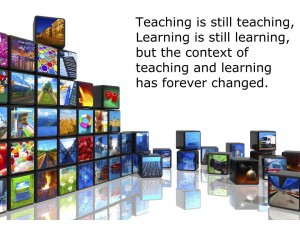“Every turned off device is a turned off child”
– Professor Stephen Heppell, University of Bomemouth
http://ed.ted.com/on/BEXOeQRX#review
In 2012, the province of Alberta produced an in-depth guide for schools on the implementation of a Bring Your Own Device (BYOD) policy. They define BYOD as: “…technology models where students bring a personally owned device to school for the purpose of learning” (Alberta Education, 2012, p.3). The rationale presented here discusses the research-based evidence of BYOD’s effectiveness, thereby offering reasons for educators and schools to adopt such a policy.
A key buzzword in the first decade and a half of this century in education has been ‘21st Century Skills’. The questions around the water cooler in the teacher’s lounge have had a similar refrain: ‘What are the skills we need students to develop in order to succeed in the 21st century?’ Here we are, it is 2016 and the world of tomorrow is upon us. As Dewitt (2013) states: “We have come to a time when we need to accept the fact that the concept of 21st Century Skills is no longer a progressive phase to latch onto but a reality that we need to instill into our school systems” (p. 1).

What are these 21st Century Skills, and how can BYOD help in their development? Simply put the skills are: CRITICAL THINKING, COLLABORATION, CREATIVITY, and COMMUNICATION. BYOD has been shown to support these skills in numerous ways. Watters (2012) claims that: “…a growing number of schools, such as New Jersey’s New Milford High School (NMHS), let students use their phones, recognizing that even the simplest gadget can be a tool for communication, calculation, photography, videography, and calculations” (p.1). In Alberta, school districts that have implemented a BYOD policy have reported that: “…students with one-to-one access were more engaged and invested in their own learning” (Alberta Education, 2012, p.5).
In essence BYOD represents a way to provide this one-to-one access to technology. With this technology, which is already so often a part of their daily lives, learning for students can be:
- more engaging, familiar, and current
- bridged between the formal and the informal
- personalized
- non-local, reaching around the globe (Alberta Education, 2012)


